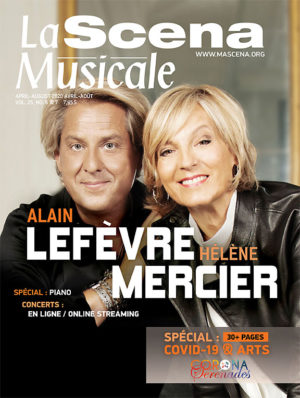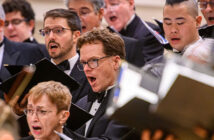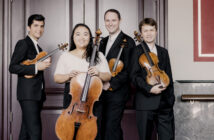
This page is also available in / Cette page est également disponible en:
![]() Francais (French)
Francais (French)
Even though Quebec Minister of Education Jean-François Roberge cried victory on June 16 by announcing the return to classes this fall for the majority of students, plans to deal with a possible second wave of COVID-19 are surrounded by doubt. While the focus of the education community is on classroom practices, teaching the arts at the primary and secondary levels remains problematic because it requires proximity between students and teachers. Ensemble classes, the sharing of instruments and activities involving the potential dispersion of droplets (such as singing) are all difficult to reconcile with social distancing measures.
That said, even though music lessons have often proven impossible, music teachers, like their colleagues, have held the fort by proposing activities to keep in touch with students. Here is a look back at an unusual spring session.
The Importance of Group Learning
On March 13, 2020, when an unprecedented period of confinement in Quebec began, public schools closed their doors to students. What initially looked like a brief two-week hiatus then dragged on, disrupting the educational path of nearly a million students across the province. While universities and CEGEPs have generally been able to continue education in a distanced format, the situation has been more complicated for elementary and secondary schools. It is difficult to teach children by videoconference, especially at an age when close contact is crucial to development.
This reality is all the more problematic for teaching music because group activities are essential to the development of certain skills. As Hélène Claise, an elementary music teacher, points out, “Science tends to show that children are generally more receptive to their peers than to adults.” In other words, group dynamics encourage listening and naturally create a ripple effect that stimulates the interest and participation of students, who act as models for each other to follow.
A Digital Solution?
But this is just one piece of the puzzle. Although some elements can be taught via the web, notably basic subjects, IT tools do not always lend themselves well to music. Asked about this, special education teacher Andrée-Anne Mathonet, who holds a Master’s degree in Arts Education, noted that in her experience, learning exclusively by screens offers only a superficial understanding of musical concepts. For example, learning notes calls on the abstraction capacity of children because they are sometimes represented differently depending on the medium used. A given note will be black on a bright screen while it will be drawn in white on a blackboard. Beyond notation, music education in elementary and secondary schools aims to develop transferable skills such as visual and auditory discrimination, enthusiasm for analysis and synthesis, and even manual dexterity.
Another problematic issue uncovered by the confinement is that families do not always have the resources necessary for distance education, a situation that further widens socio-economic inequalities. While many private schools have incorporated digital platforms into the daily lives of students, the digital shift is in its infancy in the public system. At home, the situation is also problematic for families who do not have access to the Internet and therefore find it difficult to take part in the follow-up activities offered by teachers.
Optimism in Uncertainty
With every crisis bringing its share of questions, the spring confinement period has created an opportunity for the public-school system to explore and test various solutions with a view to resuming classes this fall. For Hélène Lévesque, music pedagogical advisor at the Centre de services scolaires de Montréal (formerly the Commission scolaire de Montréal), while nothing completely replaces direct contact between students and their teacher, students will still have developed new skills this spring that allow them to cope with the sudden return to school. The “flipped classroom” is an example that looks promising. According to this educational model, already in vogue in some circles, students are introduced to the new subject not in class, but at home by means of prior homework, thus giving more time for discussion and projects in class.
In keeping with the famous saying that necessity is the mother of invention, teachers have often been particularly creative, as evidenced by the very successful virtual performances of young musicians of the band of the École primaire Saints-Martyrs-Canadiens under the direction of Marie-Soleil Bolduc (available on YouTube). The health crisis will give rise to a vast consortium of teachers and administrators seeking and sharing possible solutions for the start of the new school year. A range of scenarios is being assessed to ensure that courses are held despite the possibility of an increase in COVID-19 cases. Lévesque points out that if the performance of wind ensembles and choirs were compromised, the new emphasis could be on composition and music appreciation. In any case, children can rest easy: music lessons will be held this fall.
This page is also available in / Cette page est également disponible en:
![]() Francais (French)
Francais (French)














